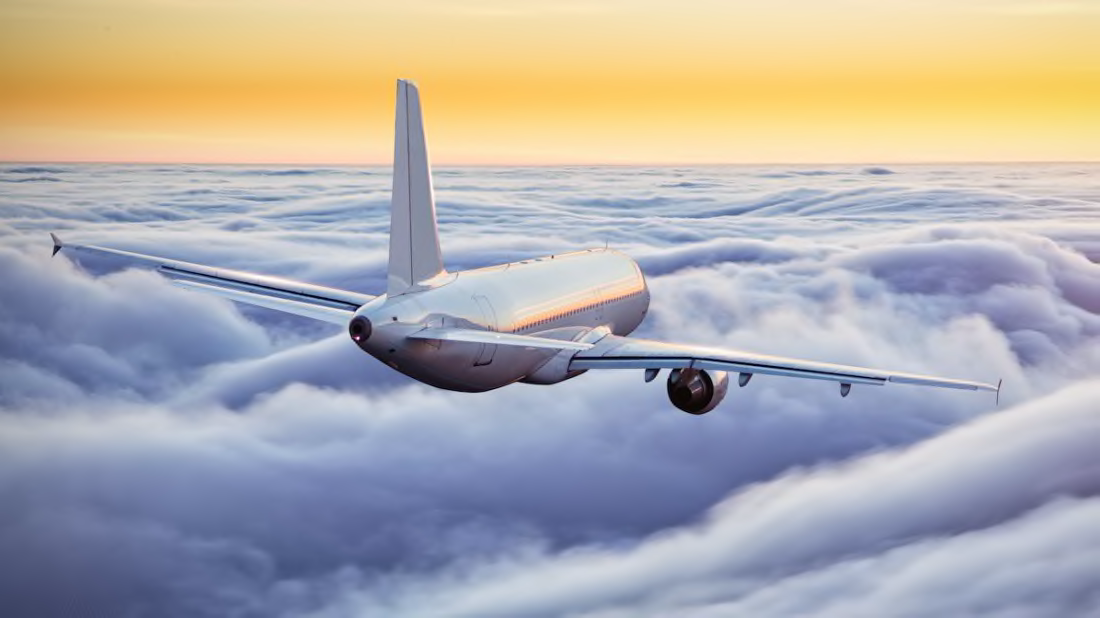What Causes Turbulence?

No matter how many times you've flown, feeling a plane rattle at 35,000 feet in the air can be an unnerving experience. But turbulence, whether it's a small bump or a stomach-flipping drop, is nothing to get shaken up about. It's a normal part of flying through the ever-shifting atmosphere.
Just like a truck traversing uneven roads or a ship navigating choppy seas, planes often encounter tumultuous, or turbulent, air currents in the skies. These currents can come from several different sources. When flying over high mountains, planes sometimes experience what’s called terrain-induced turbulence. The wind flowing over the peaks and through the valleys disrupts the air thousands of feet above it, resulting in a bumpy ride for any passing aircraft.
Even when flying over flat land, pilots can run into rough patches. Air that's been heated up by the sun at ground level expands and rises to create an updraft. As this updraft travels higher it may cool and condense into a cloud. Cloud-based or convective turbulence is the easiest kind for pilots (and passengers) to spot and prepare for, but not every updraft turns into a menacing cloud. There's also something called clear air turbulence which occurs when the rising hot air is too dry to form into a cloud. Unlike convective turbulence, these problem areas are impossible to identify with the naked eye alone.
So what happens when a plane meets up with one of these drafts in midair? The effects are usually mild: perhaps enough jostling to wake you from your in-flight nap, but not quite enough to topple your drink from its tray. Of course turbulence can become more severe, but in such cases passengers tend to think they're in more danger than they actually are.
"Even in rough turbulence, the plane is never changing altitude more than 10 or 20 feet either way," co-pilot and Cockpit Confidential author Patrick Smith told Mental Floss. "There’s this idea it's plummeting hundreds of feet. Not true."
Planes are built to be tossed and throttled by volatile weather: If you ever see a wing bending like a diving board in high winds, remember it’s supposed to do that. The biggest threat during a bout of turbulence is being knocked around the cabin, which is why most turbulence injuries are sustained by flight attendants. So the next time your pilot announces rough skies ahead, find your seat, fasten your seatbelt, and make note of where the barf bags are.

No comments:
Post a Comment